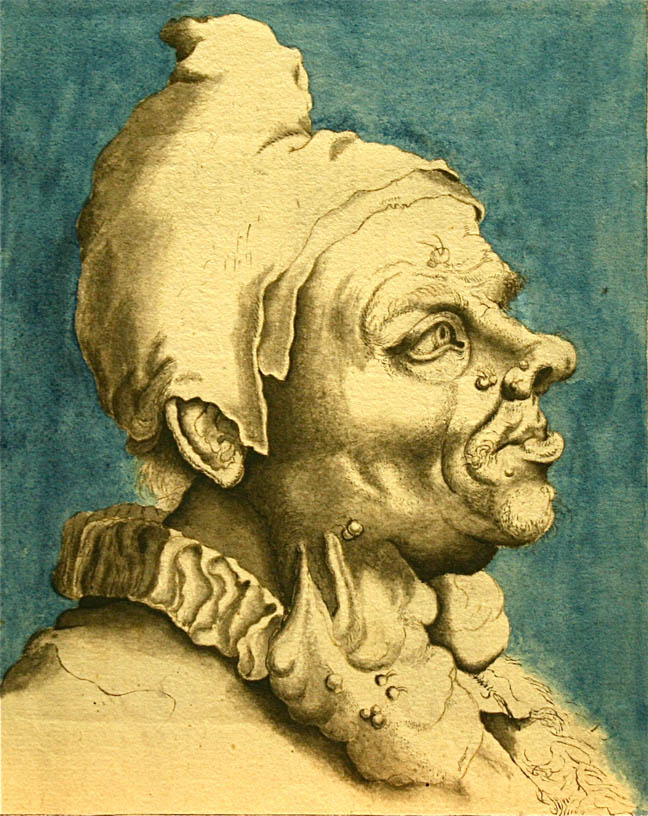

Title: Antique Ogre or Troll Watercolor Painting
Shipping: $18.00
Artist: N/A
Period: Unassigned
History: N/A
Origin: N/A
Condition: Museum Quality
Item Date: 1700 to 1800
Item ID: 1911
This Ogre or Troll concept art comes from somewhere in northern Europe. This great 18th or 19th century watercolor is not signed by the artist, whose warm fresh colors blend perfectly with the blue-gray wash and the golds and beiges of the decor. The painting is on old watercolor paper. There are a few very light spots of discoloration.
Link: http://en.wikipedia.org/wiki/Ogre
An ogre (feminine: ogress) is a large, cruel and hideous humanoid monster, featured in mythology, folklore and fiction. Ogres are often depicted in fairy tales and folklore as feeding on human beings, and have appeared in many classic works of literature. In art, ogres are often depicted with a large head, abundant hair and beard, a voracious appetite, and a strong body. The term is often applied in a metaphorical sense to disgusting persons who exploit, brutalize or devour their victims. The word ogre is of French origin. Its earliest attestation is in Chrétien de Troyes' late 12th century verse romance Perceval, li contes del graal. which contains the lines: The word ogre came into wider usage in the works of Charles Perrault (1628-1703) or Marie-Catherine Jumelle de Berneville, Comtesse d' Aulnoy (1650-1705), both of whom were French authors. Other sources say that the name is derived from the word Hongrois, which means Hungarian.[1] The word ogre is thought to have been inspired by the works of Italian author Giambattista Basile (1575-1632), who used the Neapolitan word uerco, or in standard Italian, orco. This word is documented. Some see the french myth of the ogre as being inspired by the real-life crimes of Gilles de Rais. The first appearance of the word ogre in Perrault's work occurred in his Histoires ou Contes du temps Passé (1697). It later appeared in several of his other fairy tales, many of which were based on the Neapolitan tales of Basile. The first example of a female ogre being referred to as an ogress is found in his version of Sleeping Beauty, where it is spelled ogresse. The Comtesse d' Aulnoy first employed the word ogre in her story L'Orangier et l' Abeille (1698), and was the first to use the word ogree to refer to the creature's offspring. A troll is a fearsome member of a race of creatures from Norse mythology. Originally more or less the Nordic equivalents of giants, although often smaller in size, the different depictions have come to range from the fiendish giants – similar to the ogres of England (also called Trolls at times, see Troller's Gill) – to a devious, more human-like folk of the wilderness, living underground in hills, caves or mounds. In the Faroe islands, Orkney and Shetland tales, trolls are called trows, adopted from the Norse language when these islands were settled by Vikings.